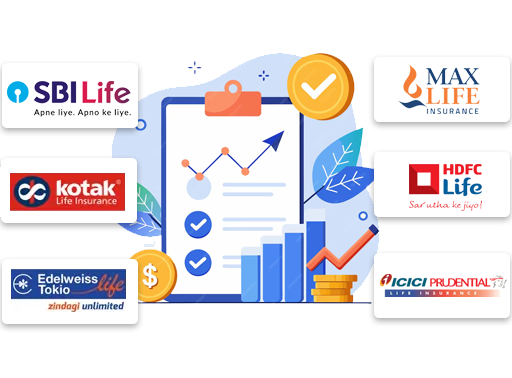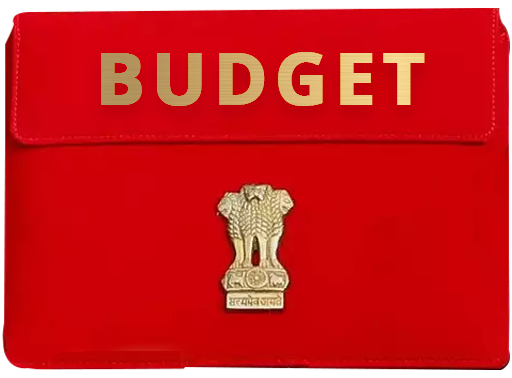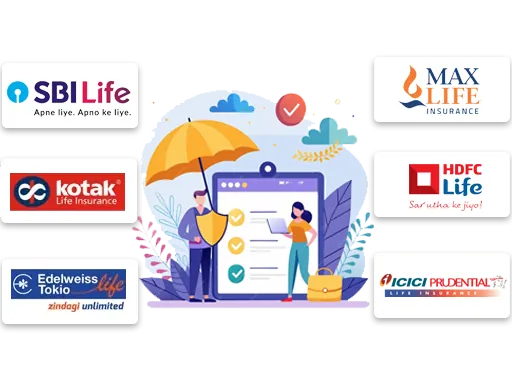- What is Retirement Plans
- List of Best Retirement Plans
- Step-by-Step Guide

A boy-in-squares bagging escapades of switching streets in groove & sensing musical airy-notes from 6 1". Under wayed nyctophile sketching the walls of life from the panorama of anime.
Reviewed By:

Sharan Gurve has spent over 9 years in the insurance and finance industries to gather end-to-end knowledge in health and term insurance. His in-house skill development programs and interactive workshops have worked wonders in our B2C domain.
Updated on Jul 07, 2025 5 min read
How to Plan for Retirement in India
Just in case you’re not a government employee, it is advisable to start making a plan for retirement. No one wants to work forever or totally rely on savings, so having a retirement plan has its benefits.
A retirement plan is a type of life insurance that helps you build wealth for your post-retirement years, along with a life cover to protect your family financially. It enables you to create a steady income source after your retirement, helps you maintain your lifestyle, and covers living expenses.
Now, you may wonder when I should start retirement planning. It’s up to you, but the earlier you start, the more time your money has to grow. Overall, for a worry-free tomorrow, you may begin investing in retirement and pension plans.
What is a Pension or Retirement Plan?
The retirement insurance plan, also known as a pension plan, is a savings plan designed to help you build a corpus for your post-retirement life. It allows you to make a one-time lump sum or regular payments over time and get a steady income source after retirement.
You can even opt for a ULIP-based retirement plan. It offers insurance cover that provides financial protection for your family and also helps you build wealth through market-linked returns from systematic investments.
By consistently investing in a retirement plan throughout your career, you can create a fund to support your retirement needs.
Best Retirement Plans in India 2025
Check out the list of best retirement plans in India online from the top insurance providers.
| Plan | Entry Age | Lump Sum Benefit at Maturity | Guaranteed Income for 30 years | Total Maturity Amount | What Makes it Best? |
| Canara HSBC iSelect GFP-LTI with ROP | 18 - 65 yrs | ₹12 Lac | ₹11,861/month | ₹54.70 Lac |
|
| Max Life SWP-Long Term Income | 18 - 60 yrs | ₹11.66 Lac | ₹11,066/month | ₹51.51 Lac |
|
| ICICI Pru GIFT Pro- Increasing Income with ROP | 18 - 60 yrs | ₹11.83 Lac | ₹6,902/month | ₹54.68 Lac |
|
| ABSLI Assured Income Plus – Income with Lump Sum Benefit | 18 - 60 yrs | ₹14.40 Lac | ₹9,670/month | ₹49.21 Lac |
|
| HDFC Guaranteed Wealth Plus-Income variant | 18 - 60 yrs | ₹12 Lac | ₹9,393/month | ₹45.82 Lac |
|
The sample benefit illustration is for a 30-year-old male who invests the amount of ₹10,000 monthly for a 10-year (Premium Payment Term) and a policy term of 30 years.
A Step-by-Step Guide to Retirement Planning Process
Planning for retirement involves the following steps:
Know When You’ll Retire
For successful retirement planning, you must determine when you will retire. Typically, traditional retirement falls around age 60, but it’s up to you whether you want to retire at an earlier or later stage of your life.
List Your Post-Retirement Goals
Once you have determined when you will retire, consider your ideal lifestyle, travel plans, and hobbies you want to pursue after retirement. It helps you assess how much coverage you need to achieve your post-retirement goals.
Determine Expenses of Your Retirement Goals
Now that you know your ideal retirement lifestyle. It is time to assess the expenses associated with your desired retirement goals. It includes regular expenses, healthcare needs, housing, utilities, groceries, etc. Once you assess the total sum you require, you can easily make a realistic savings target and investment strategy.
Make Sure to Plan for an Emergency Fund
Life uncertainties can happen even after retirement. So, keep an emergency fund to cover unexpected expenses like medical bills, appliance repairs, or home emergencies.
Estimate the Inflation Rate
Inflation leads to a decrease in the value of your savings and investments over time. It can also impact your retirement savings. Use a long-term inflation rate (typically 6-8%) and adjust your retirement savings to ensure it can beat inflation and grow your money realistically.
Evaluate Your Current Savings
Keep track of your assets and current savings or investments, such as emergency funds, FDs, mutual funds, property, etc. It helps determine the gap between your ideal post-retirement lifestyle and your current financial track.
Estimate Your Monthly Investment
In this step, you must calculate a monthly investment amount that best fits your budget while ensuring you build a corpus to reach your retirement goals.
Choose Your Investment Option
Once you have determined your retirement goals and the sum amount needed, it is time to select a suitable retirement insurance plan for yourself. There are several retirement plans available from the top insurance providers.
You can invest in market-linked retirement plans to build wealth through impressive returns. If you have a low-risk tolerance, you can invest in guaranteed plans to get a guaranteed return on your investment.
Choose Your Preferred Payout Option
Now that you’ve set up your retirement savings, it’s time to think about how you want to get your money. Typically, the plan offers flexible income payout options as a one-time lump sum, regular income, or a combination of both.
Conclusion
Post-retirement life can be very stressful if you are not financially prepared. Therefore, you must plan and opt for a retirement plan to secure a financially comfortable future. In just a few short steps, you can start retirement planning. Starting with when you’ll retire, how much money you’ll need, and your post-retirement lifestyle. Then, you will move on to the type of retirement plan you choose.
Are you still unsure about the retirement plan and want to compare different plans? If so, you can visit our official website, policyx.com or get a free comparison service from the comfort of your home.
Retirement Planning in 2025: FAQs
1. Why do you need retirement planning?
Post-retirement life can be very stressful if you are not financially prepared. So, it is best to start retirement planning to secure a financially comfortable future.
2. When should I start retirement planning?
It’s up to you, but the earlier you start, the more time your money has to grow.
3. What are the best ways to save for retirement?
A retirement plan is one of the best ways to save for retirement. It enables you to create a steady income source after retirement, helps you maintain your lifestyle, and covers living expenses.
4. Is 30 too late to save for retirement?
It’s always possible to start saving funds for your post-retirement. If you’re 30, you still have 30 years to save for retirement.
5. What is the right time to retire?
Typically, traditional retirement falls around age 60, but it’s up to you whether you want to retire earlier or later.
Life Insurance Companies
Share your Valuable Feedback
3.9
Rated by 9 customers
Was the Information Helpful?
Select Your Rating
We would like to hear from you
Let us know about your experience or any feedback that might help us serve you better in future.


Written By: Sahil Singh Kathait
A boy-in-squares bagging escapades of switching streets in groove & sensing musical airy-notes from 6 1". Under wayed nyctophile sketching the walls of life from the panorama of anime.





















Do you have any thoughts you’d like to share?